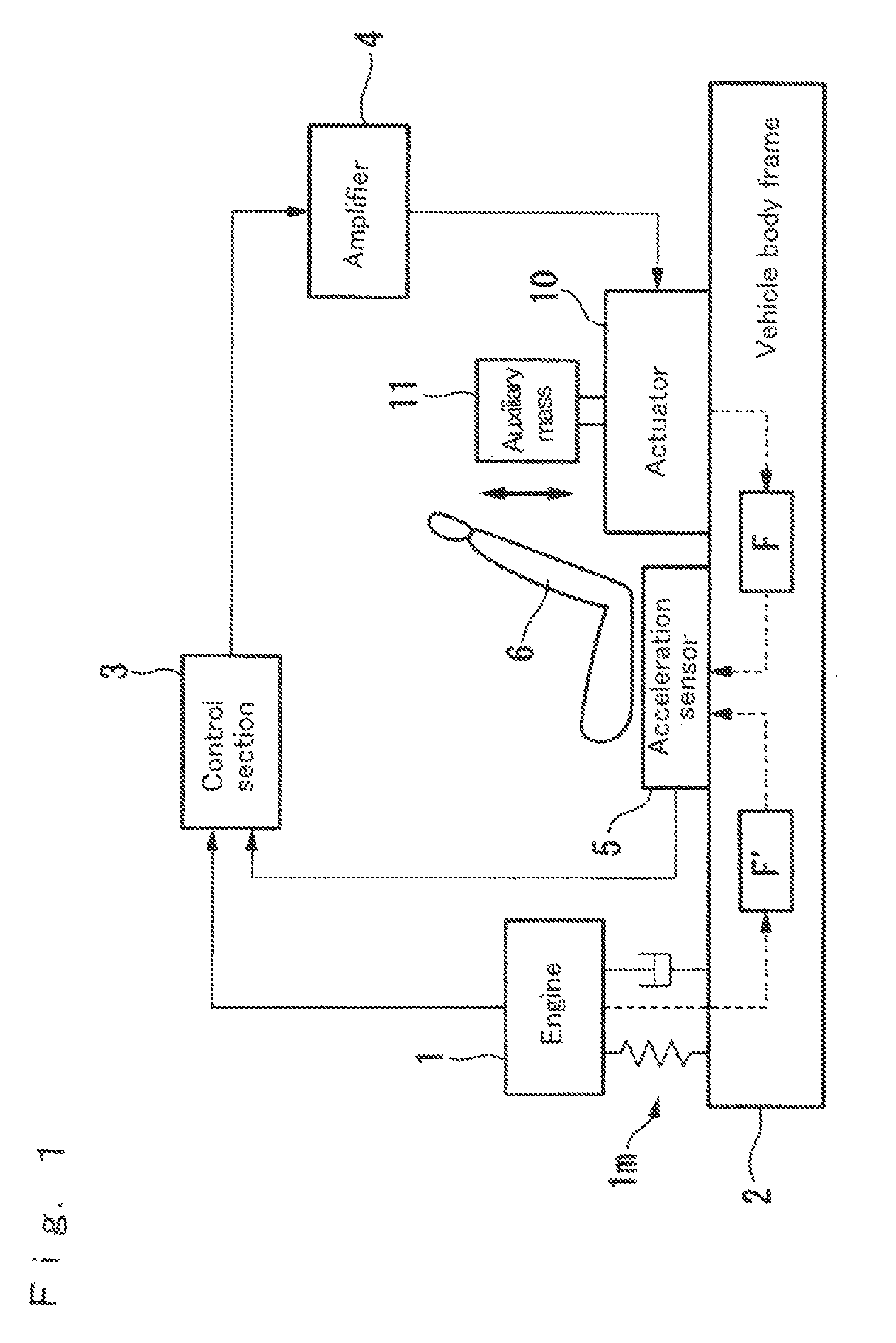Vibration damping device and vehicle
a vibration damping device and vibration technology, applied in mechanical devices, process and machine control, instruments, etc., can solve the problems of inability to achieve optimal vibration damping force, inability to effectively exert vibration damping force generated by vibration application means, and inability to mount linear actuators near the engine or near the vibration-damped position. to achieve the effect of reducing simplifying and speeding up the operation, and preventing the increase of the cost of operation processing
- Summary
- Abstract
- Description
- Claims
- Application Information
AI Technical Summary
Benefits of technology
Problems solved by technology
Method used
Image
Examples
first embodiment
[0024]A vibration damping device according to a first embodiment (first invention) will be described with reference to drawings below. FIG. 1 is a block diagram showing a configuration of the first embodiment. In FIG. 1, the reference numeral 1 denotes an engine (vibration generating source) installed on a vehicle to generate a driving force for traveling a vehicle such as a car and the engine 1 is a generating source of vibrations which are generated in the vehicle. The reference numeral 10 denotes a linear actuator (hereinafter referred to as “actuator” (vibration application means)), which includes an auxiliary mass 11 and generates a vibration damping force for damping vibrations generated in a vehicle, by a reaction obtained by vibrating the auxiliary mass 11. The reference numeral 2 denotes a body frame of a vehicle, in which the engine 1 is installed by an engine mount 1m and the actuator 10 is mounted at a predetermined position.
[0025]Here, the actuator 10 damps and controls...
second embodiment
[0038]A vibration damping device of a second embodiment according to the second invention will be described while omitting descriptions and drawings by denoting the same reference numerals to the same portions as in the above-described first embodiment. FIGS. 1, 2 and 4 are the same as in the first embodiment, and explanation will be made with reference to FIG. 5 instead of FIG. 3. In the vibration damping device according to the second embodiment, the control section 3 according to the first embodiment is replaced by a control section 103, which will be described below.
[0039]FIG. 5 is a control block diagram showing a detailed configuration of the control section 103. The control section 103 inputs and outputs signals of the acceleration sensor 5 and engine pulse signals of the engine 1, and outputs a vibration application command to the amplifier 4. It is noted that a control system explained here is based on an adaptive control algorithm utilizing the least squares method in whic...
PUM
 Login to View More
Login to View More Abstract
Description
Claims
Application Information
 Login to View More
Login to View More - R&D
- Intellectual Property
- Life Sciences
- Materials
- Tech Scout
- Unparalleled Data Quality
- Higher Quality Content
- 60% Fewer Hallucinations
Browse by: Latest US Patents, China's latest patents, Technical Efficacy Thesaurus, Application Domain, Technology Topic, Popular Technical Reports.
© 2025 PatSnap. All rights reserved.Legal|Privacy policy|Modern Slavery Act Transparency Statement|Sitemap|About US| Contact US: help@patsnap.com



